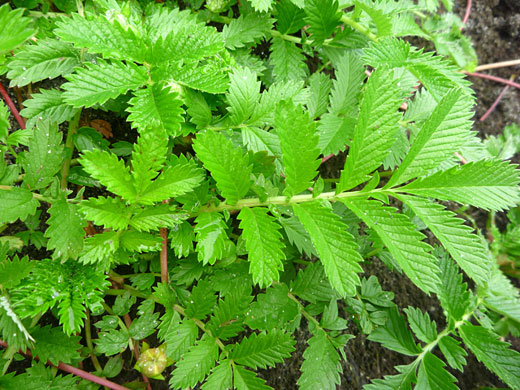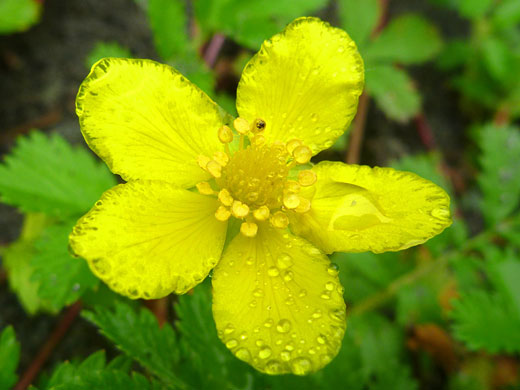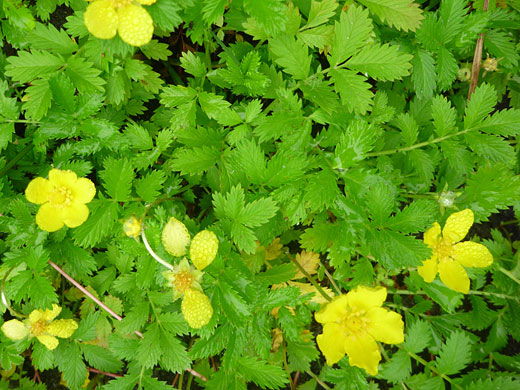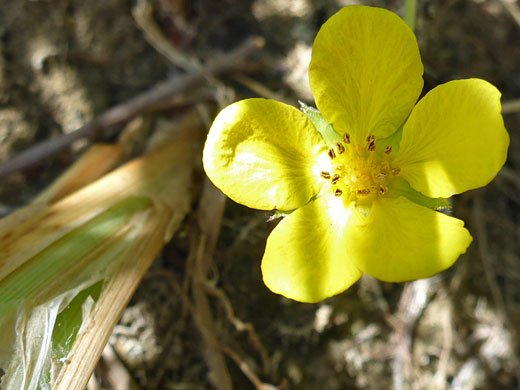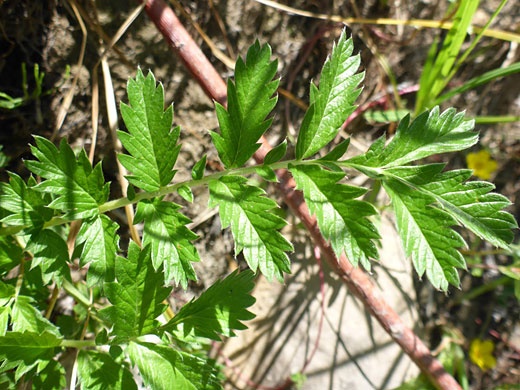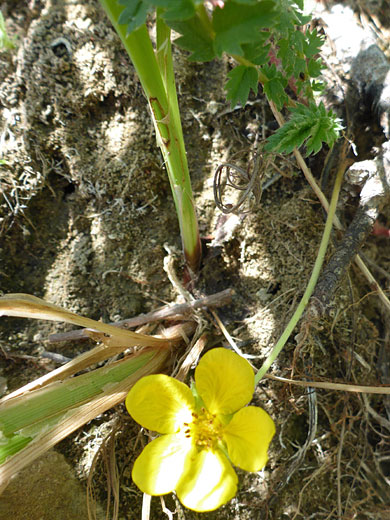Common names:
Silverweed, Pacific silverweed, common silverweed
Family:
Scientific name:
Potentilla anserina
Main flower color:
Range:
All the western states, except the southern Great Plains
Height:
A few inches - grows along the ground
Habitat:
Streambanks, moist meadows, saline wetlands; up to 8,500 feet
Leaves:
Pinnately divided into toothed, ovate leaflets; generally up to 20 inches long, sometimes up to 30 inches
Season:
March to October
There are many similar-looking potentilla species but potentilla anserina is quite easy to identify, because of the pinnate (not palmate) compound leaves, and because the flowers are produced singly, on long stalks, not part of a branched cluster. Flowers grow from the leaf nodes of sideways stems, growing along the ground.
All plant parts are non glandular. Leaves grow on short stalks, and are divided into well-spaced pairs (five to ten) of ovate leaflets, and a similarly-sized terminal leaflet, all edged by sharp, evenly-shaped teeth. Leaflets are hairy underneath, and sometimes on top. The notches between the teeth extend down about a third of the way to the central vein.
Flowers have five pointed green sepals, about half as long as the ovate yellow petals, which are slightly separated when fully open.
There are two subspecies: ssp anserina has short leaves (less than six inches long), which are hairy on the upper surfaces, and it grows in medium to high elevation areas, above 4,000 feet. Ssp pacifica has much larger leaves, up to 30 inches long, hairless on the upper surfaces, and is found only in coastal areas, below 500 feet.
All plant parts are non glandular. Leaves grow on short stalks, and are divided into well-spaced pairs (five to ten) of ovate leaflets, and a similarly-sized terminal leaflet, all edged by sharp, evenly-shaped teeth. Leaflets are hairy underneath, and sometimes on top. The notches between the teeth extend down about a third of the way to the central vein.
Flowers have five pointed green sepals, about half as long as the ovate yellow petals, which are slightly separated when fully open.
There are two subspecies: ssp anserina has short leaves (less than six inches long), which are hairy on the upper surfaces, and it grows in medium to high elevation areas, above 4,000 feet. Ssp pacifica has much larger leaves, up to 30 inches long, hairless on the upper surfaces, and is found only in coastal areas, below 500 feet.
All Contents © Copyright The American Southwest | Comments and Questions | Contribute | Site Map


